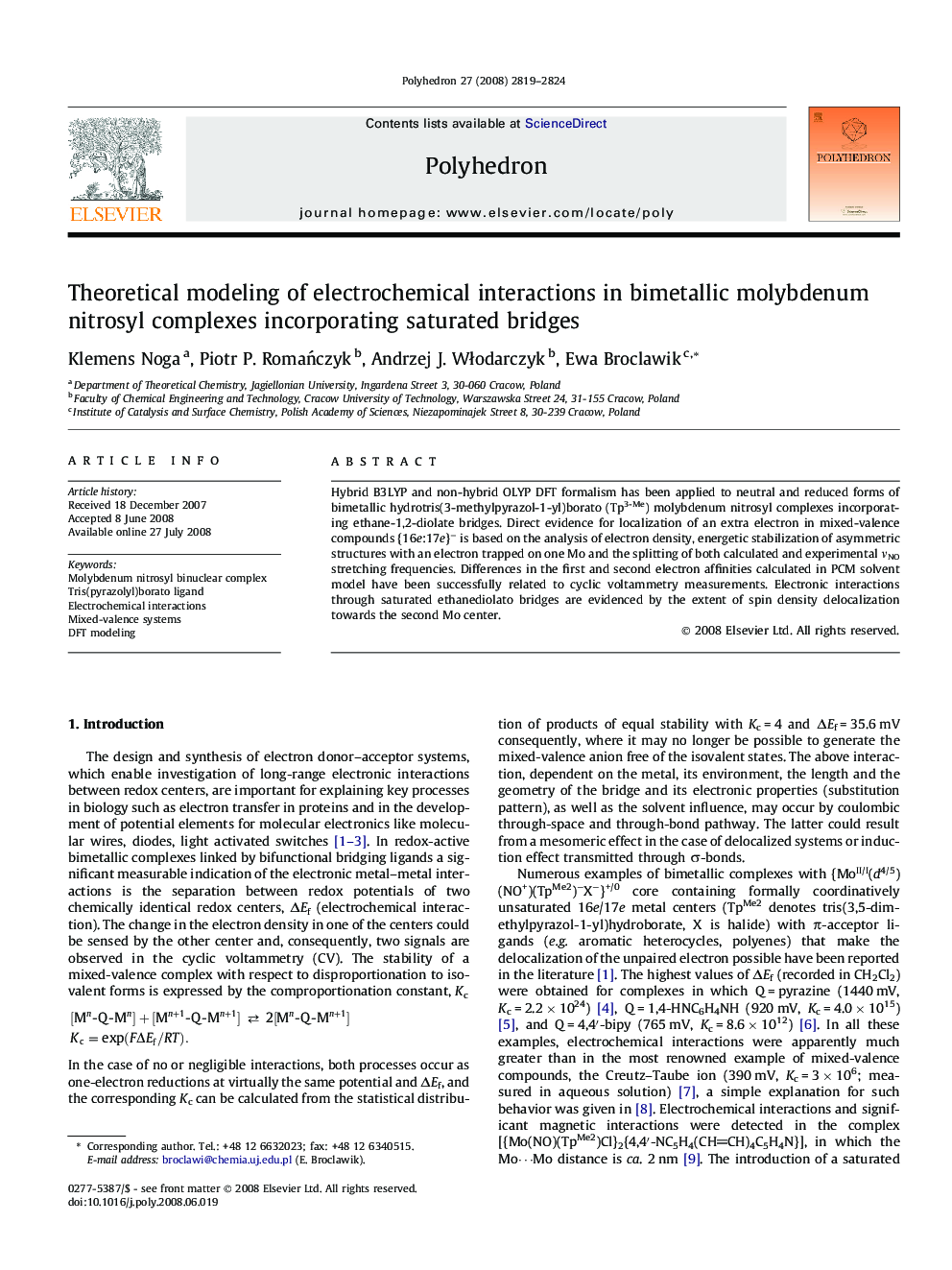| Article ID | Journal | Published Year | Pages | File Type |
|---|---|---|---|---|
| 1340345 | Polyhedron | 2008 | 6 Pages |
Hybrid B3LYP and non-hybrid OLYP DFT formalism has been applied to neutral and reduced forms of bimetallic hydrotris(3-methylpyrazol-1-yl)borato (Tp3-Me) molybdenum nitrosyl complexes incorporating ethane-1,2-diolate bridges. Direct evidence for localization of an extra electron in mixed-valence compounds {16e:17e}− is based on the analysis of electron density, energetic stabilization of asymmetric structures with an electron trapped on one Mo and the splitting of both calculated and experimental νNO stretching frequencies. Differences in the first and second electron affinities calculated in PCM solvent model have been successfully related to cyclic voltammetry measurements. Electronic interactions through saturated ethanediolato bridges are evidenced by the extent of spin density delocalization towards the second Mo center.
DFT modeling for {Mo(NO)(Tp3-Me)} binuclear complexes with ethane-1,2-diolate ligands provides direct evidence for electron localization in reduced species. Electron trapping is confirmed by geometric asymmetry, spin density distribution and the splitting of νNO stretching frequencies. In the doubly bridged complex 10% partial delocalization of unpaired electron occurs, while in the singly bridged one it is negligible.Figure optionsDownload full-size imageDownload as PowerPoint slide
